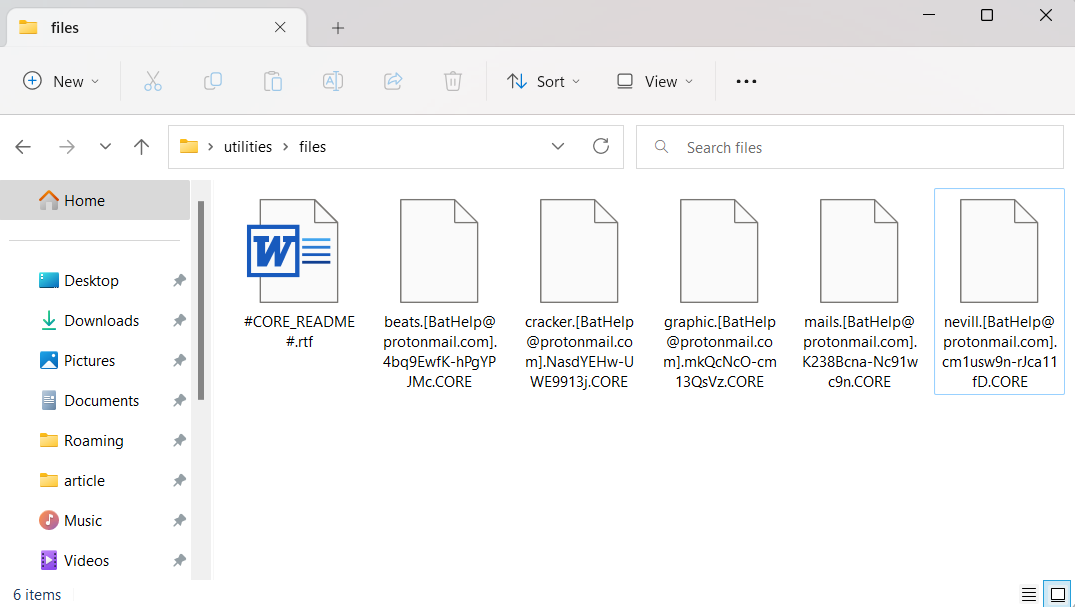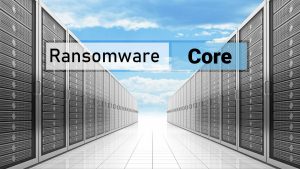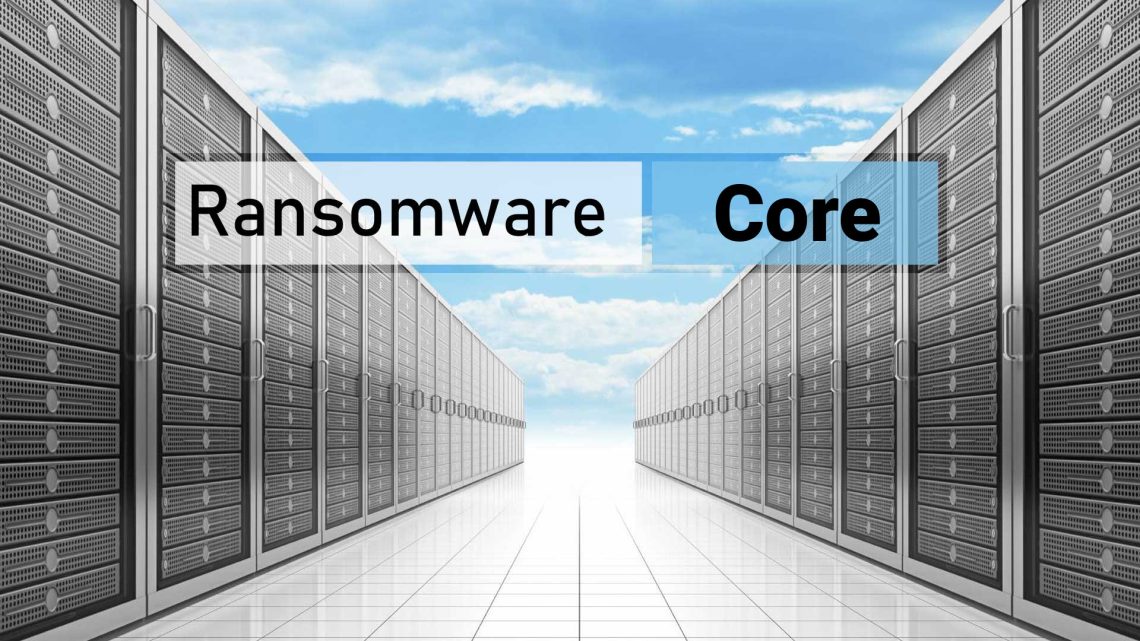The Core virus belongs to the Matrix ransomware family. Harmful software of this type encrypts all user’s data on the PC (images, text files, excel sheets, music, videos, etc) and adds its extra extension to every file, creating the #CORE_README#.rtf files in every folder containing encrypted files.
Core virus: what is known so far?
☝️ A strictly accurate denomination for the Core would be “a Matrix family ransomware malicious agent”.
The scheme of renaming is this: [contact_email].random string.CORE. The file name is getting wiped. As a part of encryption, a file named, for instance, “report.docx” will be turned into “[[email protected]].4bq9EwfK-hPgYPJMc.CORE”; the file “trades.xlsx” will turn into “[[email protected]].ncNEcn13-cmQcbAMq8.CORE.
In every directory containing the encrypted files, a #CORE_README#.rtf text file will be found. It is a ransom money note. It contains information on the ways of contacting the racketeers and some other information. The ransom note usually contains instructions on how to purchase the decryption tool from the ransomware developers. You can get this decryptor after contacting [email protected] by email. That is basically the scheme of the malefaction.
Core abstract:
| Name | Core Virus |
| Ransomware family1 | Matrix ransomware |
| Extension | .CORE |
| Ransomware note | #CORE_README#.rtf |
| Contact | [email protected] |
| Detection | UDS:Trojan-Ransom.Win32.GenericML.xnet, Ransom:Win32/StopCrypt.SU!MTB, Trojan:Win32/Redline.WON!MTB |
| Symptoms | Your files (photos, videos, documents) get a .CORE extension and you can’t open them. |
| Fix Tool | See If Your System Has Been Affected by Core virus |
The #CORE_README#.rtf document coming in package with the Core malware states the following:
HOW TO RECOVER YOUR FILES INSTRUCTION ATENTION!!! We are realy sorry to inform you that ALL YOUR FILES WERE ENCRYPTED by our automatic software. It became possible because of bad server security. ATENTION!!! Please don\'t worry, we can help you to RESTORE your server to original state and decrypt all your files quickly and safely! INFORMATION!!! Files are not broken!!! Files were encrypted with AES-128+RSA-2048 crypto algorithms. There is no way to decrypt your files without unique decryption key and special software. Your unique decryption key is securely stored on our server. For our safety, all information about your server and your decryption key will be automaticaly DELETED AFTER 7 DAYS! You will irrevocably lose all your data! * Please note that all the attempts to recover your files by yourself or using third party tools will result only in irrevocable loss of your data! * Please note that you can recover files only with your unique decryption key, which stored on our side. If you will use the help of third parties, you will only add a middleman. HOW TO RECOVER FILES??? Please write us to the e-mail (write on English or use professional translator): [email protected] [email protected] [email protected] You have to send your message on each of our 3 emails due to the fact that the message may not reach their intended recipient for a variety of reasons! In subject line write your personal ID: 2BCCF1909D24D7CC We recommed you to attach 3 encrypted files to your message. We will demonstrate that we can recover your files. * Please note that files must not contain any valuable information and their total size must be less than 5Mb. OUR ADVICE!!! Please be sure that we will find common languge. We will restore all the data and give you recommedations how to configure the protection of your server. We will definitely reach an agreement ;) !!! ALTERNATIVE COMMUNICATION If yоu did nоt rеcеivе thе аnswеr frоm thе аfоrеcitеd еmаils fоr mоrе then 24 hours please sеnd us Bitmеssаgеs frоm а wеb brоwsеr thrоugh thе wеbpаgе hxxps://bitmsg.me. Bеlоw is а tutоriаl оn hоw tо sеnd bitmеssаgе viа wеb brоwsеr: 1. Оpеn in yоur brоwsеr thе link hxxps://bitmsg.me/users/sign_up аnd mаkе thе rеgistrаtiоn bу еntеring nаmе еmаil аnd pаsswоrd. 2. Уоu must cоnfirm thе rеgistrаtiоn, rеturn tо уоur еmаil аnd fоllоw thе instructiоns thаt wеrе sеnt tо уоu. 3. Rеturn tо sitе аnd сlick \"Lоgin\" lаbеl оr usе link hxxps://bitmsg.me/users/sign_in, еntеr уоur еmаil аnd pаsswоrd аnd click thе \"Sign in\" buttоn. 4. Сlick thе \"Сrеаtе Rаndоm аddrеss\" buttоn. 5. Сlick thе \"Nеw mаssаgе\" buttоn. 6. Sеnding mеssаgе: Tо: Еntеr аddrеss: BM-2cXRWRW5Jv5hxbhgu2HJSJrtPf92iKshhm Subjесt: Еntеr уоur ID: - Mеssаgе: Dеscribе whаt уоu think nеcеssаrу. Сlick thе \"Sеnd mеssаgе\" buttоn. NEX92JhO
In the screenshot below, you can see what a directory with files encrypted by the Core looks like. Each filename has the “.CORE” extension added to it.

Files encrypted by Core ransomware
How did my computer get infected with Core ransomware?
There is a huge number of possible ways of ransomware injection.
Nowadays, there are three most popular methods for tamperers to have ransomware acting in your system. These are email spam, Trojan infiltration and peer-to-peer networks.
If you access your mailbox and see emails that look just like notifications from utility services providers, postal agencies like FedEx, web-access providers, and whatnot, but whose “from” field is unknown to you, be wary of opening those letters. They are most likely to have a ransomware file enclosed in them. So it is even riskier to open any attachments that come with emails like these.
Another thing the hackers might try is a Trojan virus scheme2. A Trojan is an object that infiltrates into your PC pretending to be something legal. For instance, you download an installer of some program you want or an update for some service. But what is unboxed turns out to be a harmful program that encodes your data. As the installation wizard can have any name and any icon, you have to make sure that you can trust the source of the things you’re downloading. The best way is to use the software developers’ official websites.
As for the peer networks like torrent trackers or eMule, the threat is that they are even more trust-based than the rest of the Internet. You can never guess what you download until you get it. So you’d better be using trustworthy resources. Also, it is a good idea to scan the folder containing the downloaded items with the anti-malware utility as soon as the downloading is done.
How to remove the Core virus?
It is crucial to inform you that besides encrypting your files, the Core virus will probably install the Azorult Spyware on your computer to seize your credentials to different accounts (including cryptocurrency wallets). The mentioned spyware3 can extract your logins and passwords from your browser’s auto-filling data.
Often criminals would unblock several of your files to prove that they indeed have the decryption tool. As Core virus is a relatively recent ransomware, security software designers have not yet found a way to undo its work. Nevertheless, the decoding tools are constantly updated, so the effective countermeasure may soon arrive.
Sure thing, if the tamperers do the job of encoding victim’s essential data, the desperate person will probably fulfill their demands. Despite that, paying a ransom does not necessarily mean that you’re getting your data back. It is still risky. After obtaining the ransom, the racketeers may send a wrong decryption key to the injured party. There were reports about malefactors just disappearing after getting the money without even writing back.
The best safety measure against ransomware is to have a system restore point or the copies of your essential files in the cloud drive or at least on an external drive. Surely, that might be not enough. Your most important thing could be that one you were working upon when it all happened. But at least it is something. It is also reasonable to scan your PC for viruses with the antivirus program after the OS is rolled back.
There are other ransomware products, besides Core, that work similarly. Examples of those are Towz, Powd, Tuow, and some others. The two major differences between them and the Core are the ransom amount and the encoding method. The rest is almost identical: documents become encoded, their extensions altered, ransom notes are found in each folder containing encoded files.
Some fortunate people were able to decode the blocked files with the aid of the free software provided by anti-ransomware specialists. Sometimes the criminals mistakenly send the decryption key to the wronged in the ransom note. Such an epic fail allows the victim to restore the files. But obviously, one should never rely on such a chance. Remember, ransomware is a tamperers’ tool to pull the money out of their victims.
How do I avert ransomware infiltration?
Core ransomware has no endless power, so as any similar malware.
You can defend your computer from ransomware attack taking several easy steps:
- Ignore any letters from unknown senders with unknown addresses, or with content that has nothing to do with something you are waiting for (how can you win in a money prize draw without participating in it?). In case the email subject is more or less something you are waiting for, check all elements of the dubious letter with caution. A fake email will always have mistakes.
- Never use cracked or untrusted software. Trojans are often distributed as an element of cracked products, possibly as a “patch” to prevent the license check. But potentially dangerous programs are very hard to distinguish from reliable software, because trojans may also have the functionality you seek. You can try to find information on this program on the anti-malware forums, but the optimal solution is not to use such software.
- And to be sure about the safety of the objects you downloaded, check them with GridinSoft Anti-Malware. This software will be a perfect armor for your PC.
Reasons why I would recommend GridinSoft4
There is no better way to recognize, remove and prevent ransomware than to use an anti-malware software from GridinSoft5.
Download Removal Tool.
You can download GridinSoft Anti-Malware by clicking the button below:
Run the setup file.
When setup file has finished downloading, double-click on the setup-antimalware-fix.exe file to install GridinSoft Anti-Malware on your system.

An User Account Control asking you about to allow GridinSoft Anti-Malware to make changes to your device. So, you should click “Yes” to continue with the installation.

Press “Install” button.

Once installed, Anti-Malware will automatically run.

Wait for the Anti-Malware scan to complete.
GridinSoft Anti-Malware will automatically start scanning your system for Core infections and other malicious programs. This process can take a 20-30 minutes, so I suggest you periodically check on the status of the scan process.

Click on “Clean Now”.
When the scan has completed, you will see the list of infections that GridinSoft Anti-Malware has detected. To remove them click on the “Clean Now” button in right corner.

FAQ
🤔 Can I somehow access “.CORE” files?
Negative. That is why ransomware is so frustrating. Until you decode the “.CORE” files you will not be able to access them.
🤔 The encrypted files are very important to me. How can I decrypt them quickly?
If the “.CORE” files contain some really important information, then you probably have them backed up. Otherwise, you might try to employ System Restore. The only question is whether you have saved any Restore Points that would be helpful now. The rest of the methods require patience.
🤔 Will GridinSoft Anti-Malware remove all the encrypted files alongside the Core virus?
Of course not. The encrypted files are not harmful, so they won’t be deleted.
GridinSoft Anti-Malware only deals with real threats. The malware that has infected your PC is must be still active and running scans periodically to encrypt any new files you might create on your PC after the attack. As it has been said above, the Core malware comes with the company. It installs backdoors and keyloggers that can steal your account credentials and provide criminals with easy access to your computer in the future.
🤔 What actions should I take if the Core malware has blocked my computer and I can’t get the activation code.
If that happened, you need to prepare a memory stick with a previously installed Trojan Killer. Use Safe Mode to do the cleaning. You see, the ransomware runs automatically as the system boots and encodes any new files created or brought into your machine. To block this process – use Safe Mode, which allows only the essential programs to run upon system start. Consider reading our manual on booting Windows in Safe Mode.
🤔 What could help the situation right now?
Some of the encrypted data can be found elsewhere.
- If you exchanged your critical files via email, you could still download them from your online mailbox.
- You might have shared photographs or videos with your friends or family members. Simply ask them to give those images back to you.
- If you have initially got any of your files from the Internet, you can try doing it again.
- Your messengers, social networks pages, and cloud storage might have all those files as well.
- It might be that you still have the needed files on your old computer, a notebook, cellphone, flash memory, etc.
HINT: You can employ data recovery utilities6 to retrieve your lost information since ransomware blocks the copies of your files, deleting the authentic ones. In the tutorial below, you can see how to use PhotoRec for such a restoration, but remember: you can do it only after you eradicate the ransomware itself with an antivirus program.
Also, you can contact the following official fraud and scam sites to report this attack:
- In the United States: On Guard Online;
- In Canada: Canadian Anti-Fraud Centre;
- In the United Kingdom: Action Fraud;
- In Australia: SCAMwatch;
- In New Zealand: Consumer Affairs Scams;
- In France: Agence nationale de la sécurité des systèmes d’information;
- In Germany: Bundesamt für Sicherheit in der Informationstechnik;
- In Ireland: An Garda Síochána;
To report the attack, you can contact local executive boards. For instance, if you live in USA, you can have a talk with FBI Local field office, IC3 or Secret Service.
I need your help to share this article.
It is your turn to help other people. I have written this guide to help people like you. You can use the buttons below to share this on your favorite social media Facebook, Twitter, or Reddit.
Brendan SmithHow to Remove CORE Ransomware & Recover PC

Name: CORE Virus
Description: CORE Virus is a ransomware-type infections. This virus encrypts important personal files (video, photos, documents). The encrypted files can be tracked by a specific .CORE extension. So, you can't use them at all.
Operating System: Windows
Application Category: Virus
User Review
( votes)References
- My files are encrypted by ransomware, what should I do now?
- You can read more on Trojans, their use and types in the Trojan-dedicated section of GridinSoft official website.
- You can read more on spyware variants and nature in the respective section of GridinSoft official website.
- GridinSoft Anti-Malware Review from HowToFix site: https://howtofix.guide/gridinsoft-anti-malware/
- More information about GridinSoft products: https://gridinsoft.com/comparison
- Here’s the list of Top 10 Data Recovery Software Of 2023.


